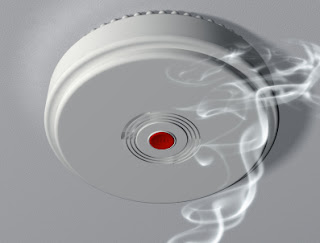Ontario
is poised to make carbon monoxide detectors mandatory in all homes, becoming
only the second jurisdiction in Canada to compel people to have the devices.
A
private member’s bill making the devices mandatory is set for a final vote in
the legislature Wednesday afternoon, when it is expected to pass.
Progressive
Conservative MPP Ernie Hardeman, who is sponsoring the legislation, said 250
Ontarians have been killed by the odourless, colourless gas in the last decade.
“Carbon
monoxide is the silent killer – there’s no way you can tell if it’s in your
home unless you have the alarm, the detector,” he said. “I can guarantee
Ontario will be safer if this law gets passed.”
The
law is named the Hawkins-Gignac Act after Ontario Provincial Police Constable
Laurie Hawkins (née Gignac) and her family. Ms. Hawkins, her husband Richard,
daughter Cassandra and son Jordan died of carbon monoxide poisoning from a gas
fireplace in their Woodstock, Ont., home in 2008.
Mr.
Hardeman said that, once the bill is passed, Ontarians will have to install
detectors in their homes. But it could take some time for local fire
departments to sort out protocols for making sure the detectors are installed,
such as they now have for smoke alarms.
The
bill has spent five years before the legislature. Earlier
this year, the Yukon passed a similar law.
The
Hawkins-Gignac Act was the second bill to come to a final vote Wednesday.
Shortly before noon, the legislature unanimously passed the Stronger Protection
for Ontario Consumers Act.
Among
other things, the new consumer rules crack down on aggressive water-heater
salespeople by giving customers a 20-day window to cancel the installation of a
new heater and allowing the province to fine unscrupulous salespeople.
They
also ban debt settlement services from charging fees up front, and require that
real estate agents have written bids on properties to prevent them from lying
about non-existent bids to drive up prices.
“We’ve
heard that prices get jacked up because of these so-called other bids, and
there really isn’t proof sometimes that those bids exist,” Consumer Services
Minister Tracy MacCharles said. “We want to see good compliance, we want to see
businesses following these rules, and I’m confident they will…I do think when
people are confident about what they’re entering into, they’re going to be a
smarter consumer and I think the industry will respond accordingly.”
The Town of Whitby provides useful information about carbon monoxide alarms on its website. Keep your family and home safe!
Randy Miller
Sales Representative
Re/Max Rouge River Realty Ltd., Brokerage
905-668-1800 or 905-427-1400
randy@randymiller.ca
www.randymiller.ca
Randy Miller
Sales Representative
Re/Max Rouge River Realty Ltd., Brokerage
905-668-1800 or 905-427-1400
randy@randymiller.ca
www.randymiller.ca





